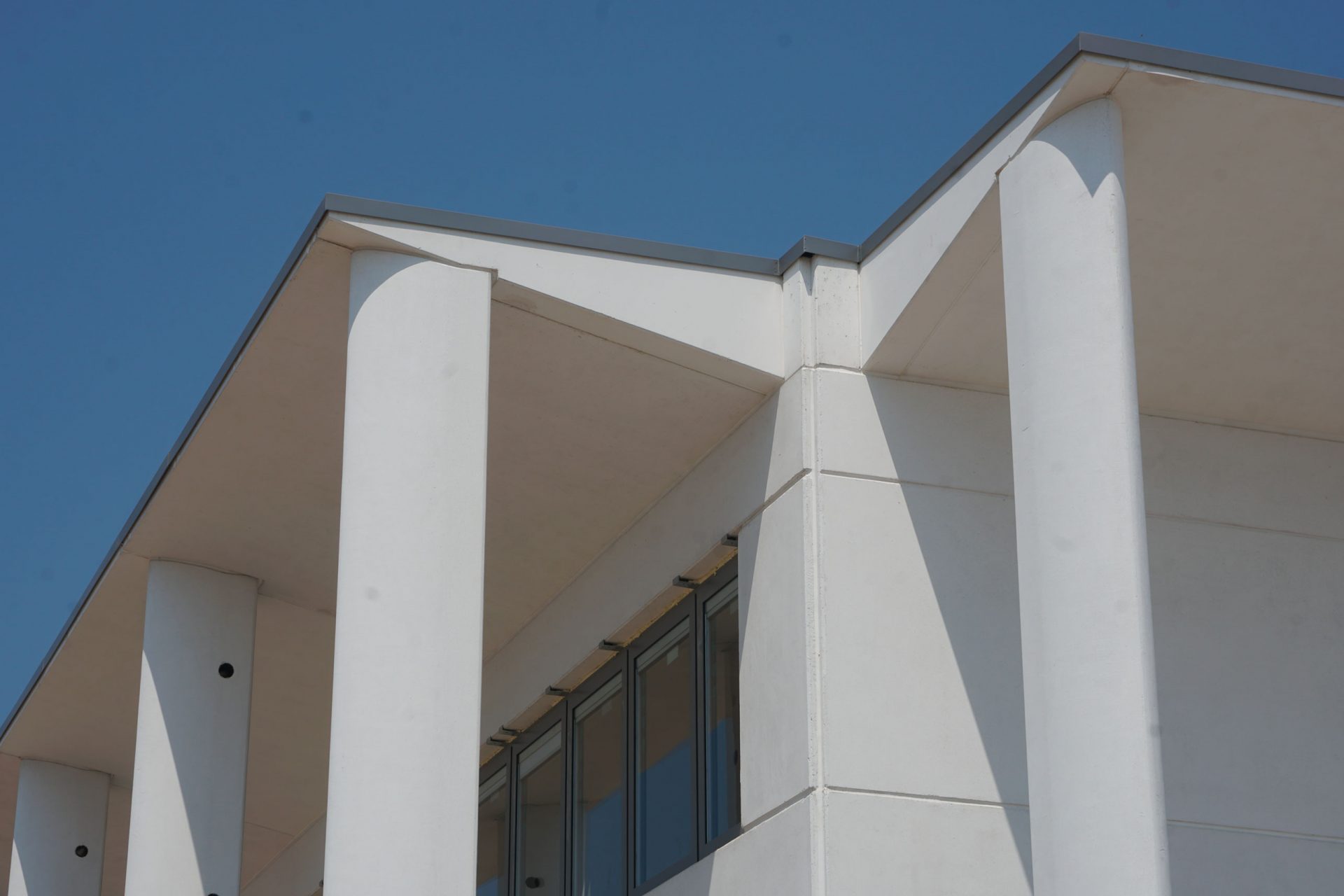Magnetti Building presents its photocatalytic panels that are capable of activating the process of decomposition of organic and inorganic polluting substances. These are made thanks to TX Active, a type of self-cleaning concrete and are the first of its kind produced in Italy.
Carvico (Bg), 20th November 2018 – – Self-cleaning, sustainable, versatile, long-lasting and require no maintenance. These are the characteristics of the prefinished panels used for the cladding of industrial buildings, constructed by Magnetti Building, capable of reducing several pollutants and, consequently, improving the ambient air. This solution is the first of its kind in Italy and these products are manufactured by using a particular type of concrete (TX Active) characterised by a photocatalytic activity that develops thanks to its specific formulation. Once it is irradiated with light, this particular self-cleaning concrete oxidises the toxic substances (PM10, nitrogen oxides and dioxides, aromatic polycondensates, benzene, carbon monoxide) that deposit on buildings, transforming them into non-toxic compounds.
Thanks to this particular type of concrete, the use of these panels confers infinite advantages to the cladded industrial surfaces. Grease, dust, acid rain and nitrogen oxide (NOx) account for a considerable share of the architectural deterioration of buildings. Over time, the self-cleaning properties and anti-fouling effect of the panels the brilliance of the colour and, consequently the aesthetic qualities of the works.
When irradiated with sunlight or artificial light, these special panels are capable of purifying the air by obtaining a concrete reduction of organic and inorganic substances coming from air pollution, with a clearly eco-sustainable function, in line with current legislation with regards to sustainable construction. The results of rigorous field research carried out have confirmed a reduction of up to 50% of Nitrogen Oxide and othter toxic compounds.
Moreover, these solutions are versatile and perfectly suitable to create all types of cladding. The wide colour range as well as the availability of several finshes make it possible to create aesthetically-pleasing, customised surfaces to meet the customer’s preferences. Finally, these products are highly resistant and do not require any maintenance. Freeze/thaw cycles, the actions of sodium chloride, adverse weather conditions and ageing will be effectively counteracted by these special claddings.
These are high-performing products at the service of modern architecture and sustainable construction, thanks to the use of photocatalytic concrete, a material that is becoming increasingly popular throughout Europe.



